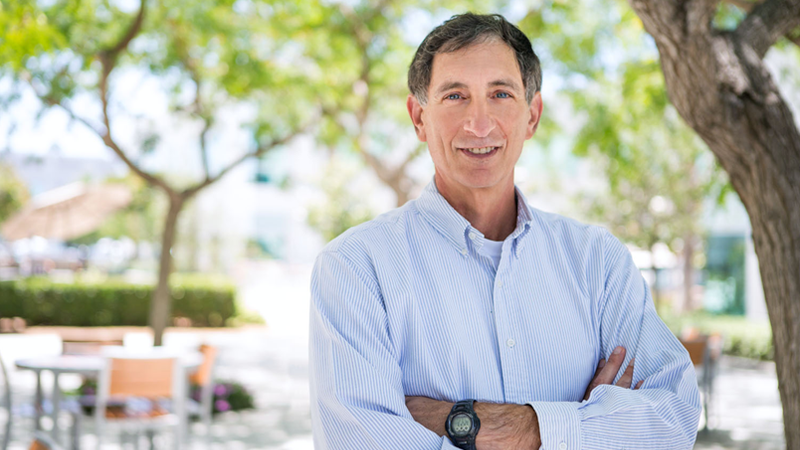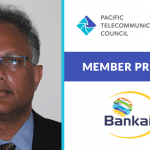 Mark Dankberg, CEO and co-founder of Viasat, is excited about new opportunities for the satellite industry and beyond.
Mark Dankberg, CEO and co-founder of Viasat, is excited about new opportunities for the satellite industry and beyond.
Viasat CEO is bullish on Wi-Fi, OTT, and mobility delivered through broadband satellite.
When Mark Dankberg, CEO and co-founder of Viasat, says he is excited by new opportunity, people in the satellite industry—and beyond—have good reason to listen. Mr. Dankberg can call upon a 32-year perspective from navigating through turbulent times in a dynamic industry, and in taking Viasat from a startup to its leading position in the sector.
Now, he checks off that upcoming opportunity list: “The opportunities to do really meaningful things at scale that we never used to do, connecting the unconnected, and delivering connectivity in places where people don’t expect it.”
What does “meaningful” mean? For Mr. Dankberg, it’s an overlapping landscape of Wi-Fi, OTT video, more mobility than ever, and new partnerships mediated in broadband delivery from satellite. Above all, it represents a rearrangement of how existing needs get solved, how existing players are run, and how the sector will collaborate with other players in the future.
Rearrangement #1: User perspectives matter
Mr. Dankberg recognizes the rearrangement will likely see new business models, value chains, delivery concepts, and integration possibilities. End users will be directly involved, he says, because in this landscape, developments like Wi-Fi become increasingly important as customer facing technologies: “It is important for us to work directly with end users, so we can understand what they want, what’s important to them.”
The ultimate consumer perspective is important, he argues, because it should frame business realities. He takes latency issues surrounding satellite services as a case in point: “Telcos ask about it. Wireless carriers ask about it. Regulators ask about it,” he says. “Customers almost never ask about it. They ask why the Netflix stream stopped, why they can’t access a particular website.”
Rather, in emphasizing Wi-Fi as one delivery mechanism, he says availability, proliferation, free connectivity, and no hindering gatekeepers are the issues important to the user.
The compressed and rearranged value chain depends upon these issues as well. He is keen to see better value propositions for customers replacing the tricky economics of past service delivery where telcos were invariably intermediaries for satellite service providers.
“There’s a big economic distortion introduced by telcos,” he reveals. “I am not picking on them but they [are an] example.” Here, he identifies, the telco business model in the past needed plenty of customers to justify network capex, and even if better solutions such as satellite service propositions were available, they were squeezed out. Now, satellite service providers can reach out to users in ways previously impossible and create new propositions directly.
Rearrangement #2: New markets are mobile and personal
Wi-Fi for example, Mr. Dankberg suggests, at the user level can present personal connectivity possibilities, particularly if they link mobility and connectivity.
He clearly thinks about extremely diverse possibilities of how people will bring their devices together, what they will need, and how they will connect. “[Putting] Wi-Fi connectivity to a watch, ring, wearable devices or smart notepad, to the extent those are tethered to your mobile device where you have a subscription, [and mediated by satellite] will give access at times and places where they are otherwise unconnected.”
He says further opportunities open up if satellite is providing primary connectivity to a home or a business, and Viasat will have the capacity to leverage this access accordingly.
Rearrangement #3: Policy will facilitate, not prevent, new opportunities around the world
Value chains are being overhauled, but what about regulatory and policy attitudes? Asia Pacific is one key area which has seen a traditionally protective attitude toward both flag carriers and national satellite operators. Mr. Dankberg maintains it is “a dynamic situation” and the changes no longer mean policymakers make binary decisions.
He continues: “Many countries look at Internet infrastructure as a sovereign issue and they want a measure of control [over it].” But he argues that providers will see progress if they can offer valuable services: “Can you provide a service to that country that the country values? If the country values it, they will find a way to allow it.” He acknowledges, “I don’t think it is the same as having a blanket license to everything everywhere, but I do think there are opportunities where you can do things that those countries find valuable.”
Across the Pacific in the U.S., providers and policymakers likewise need to respond to upheaval, and particularly demand black spots. “There definitely are opportunities in underserved areas of the U.S.,” he asserts, “particularly where terrestrial services are simply too expensive to provide.” If terrestrial providers relinquish some opportunities due to return on capital issues, he emphasizes, “this creates new opportunities for other technologies.”
Rearrangement #4: New ecosystems become possible
All the foregoing likely means new partnerships and ecosystems are inevitable. Mr. Dankberg predicts there will be various kinds, often featuring players outside the telecom space altogether. He points out, “I think a lot of these ecosystems are built around economic benefit that becomes win-win for partners and end users.”
The airline business is a clear case study. The ecosystem Viasat evaluates, includes both airlines and a variety of content players. Viasat, he says, can provide a missing piece to bring the value chain together. “The fact we can deliver streaming is important because the content players are not broadcasters,” he denotes. “Participants such as Spotify could never previously deliver content direct to users but now they can.”
The ecosystem will consequently develop of its own accord. “Those guys bring really desirable content and good brand names,” he points out. “The fact that it is possible starts attracting other partners.” He says more niche players will increasingly have an interest in the same delivery opportunities, particularly in the content space where they will include digital learning, sports, and news providers. He indicates community networks in rural locations will follow a similar pathway. “Service providers become participants in ecosystems that didn’t exist before…[and] those ecosystems evolve naturally based on shared interests,” he suggests.
Across the board, many see broadband capabilities ahead for the satellite business. Viasat, however, has continued to put its money where its mouth is, upping the raw capability of what could be delivered. When ViaSat-2 was announced, Mr. Dankberg famously remarked it provided more capacity than all other existing systems combined. Now, in prospect is ViaSat-3, a 1Tbps system, within the 2020 timeframe. Such major systems are clearly designed to breathe life into the connectivity possibilities that he lists.
The danger, he hints, is many players are simply underestimating the degree of probable change both inside and outside the sector. “I think things are changing really fast.” He takes the mobile ecosystem as a primary example. He asserts, “It has changed totally in a decade, and in another decade, it will look totally different again.”
But this means more opportunities, and it sums up the management thinking and philosophy that ultimately drives him. Pausing, with a smile when asked the inevitable question, he finally says: “I think things will change again. I like change. I am always looking at how are things going to change, and how can we take advantage of it.”




